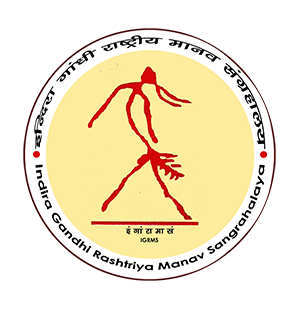बोड़ो कछारी
जिलाः ग्वालपारा
राज्यः असम
संकलन वर्ष: 1988
बोडो कछारी असम के सबसे बड़े जनजातीय समुदायों में से एक है जो की गवालपाड़ा कामरूप और दारांग जिले में केन्द्रित है। मैदारी भूमि में हरियाली से घिरे उनके गांव उसे 5 कि.मी. में अलग-अलग आकार के होते है। आवास छितरे हुए झुण्डों में परस्पर जुड़ी गलियों से युक्त या रहित होतो है। बोडो लोग सिनो तिब्बतन, बोडो भाषा बोलते है। शुरूआती दिनों में बोडो कछारी कृषि और पशुपालन करते थे। धान की खेती, चाय रोपण, मत्स्याखेट, सुअर और मुर्गी पालना, रेशम के कीड़े पालना आदि अन्य व्यवसाय वे करते है। पिछले वर्षो में उन्होने बांस से कई उत्पादों की रचना कर शिल्पकारी का भी विकास किया है बुनाई भी बोडी लोगों के बीच एक लोकप्रिय व्यवसाय है। बोडो कछारी अपने आपको वर्ष भर कृषकीय गतिविधियों से जुड़े धार्मिक अनुष्ठानों में व्यस्त रखते है।
बाँस की उँची बाढ़ के भीतर स्थित बोड़ो कछारी घरो में एक मध्यय आंगन के चारों तरफ, चार छप्पर युक्त इकाईयाँ होती हैं। ये संरचनाएं अधिकांश बांस व घास से होती है जिनमें कुछ हद तक लकड़ी व मिट्टी का भी प्रयोग किया जाता है। मुख्य घर का उपयोग दिन में घरेलू कामकाज व रात को सोने के लिए किया जाता है। खाना पकाने के लिये एक अलग कुटिया बनती है। इसमें मेहमानों के लिये भी एक कुटिया (कक्ष) तथा अन्नागार होता है जिसका उपयोग पारिवारिक सदस्य भी करते है। रसोईघर का बगल की दीवाल से जुडे करघे वाले शेड का इस्तेमाल पुरूष वं महिलाएं दोनों करते है। भोजन आंगन में परोसा जाता है, जिसके उत्तरी कोने में पूजा स्थल हो जहाँ सिजू वृक्ष के रूप में बांस की खपच्चियों बुने हुए घेरे में ईष्ठ देवता वास करते है।
बोडो लोग बयोऊ धर्म का पालन करते है जिसमें प्रकृति के पांच प्रतीक- पवन, अग्नि, थल, जल, आकाश है अनमें प्रमुख देव/देवी बथोउ बराई है कहा जाता है कि उन्होने ही पांच सिधांतों की रचना की। बोडो गांव के हर घर में सिजोऊ का वृक्ष स्थापित होता है। पौधे को बथोउबराई का सजीव अवतरण माना जाता है और हर कदम पर पांच तने प्रकृति के पांच तत्वों का प्रतिनिधित्व करते है।
Bodo Kacharis
Dist. Golpara
State: Assam
Year of collection: 1988
The Bodo Khachari is one of the largest tribal communities who are mainly concentrated in the distict of Goalpada, Kamrup and Darang in Assam. In the lush green surroundings of plain land, their villages very in size between 3 to 5 kms. The houses are arranged in loose clusters with or without a definite interconnecting street. The Bodo people speek in Bodo language, a Sino Tibetan language.
In early days Bodo Khachari practices farming and cultivation. Rice farming, tea plantation, fishing, pig and poultry farming, silkworm rearing are the other occupations they practice. They have also developed in the years the art of carftmenship by creating several products from bamboo. Weaving is also a popular occupation among the Bodos. Bodo Kacharis engage themselves in religious activities coincided by events of agricultural cycle throughout the year.
The dwelling complex of a Bodo-Kachari family surrounded by a high fence consists of four thatched structures around a central courtyard. The hut structures are prepared mostly of bamboo and grass with a partial application of wood and mud. The main dwelling house is built with the purpose of a sleeping facility at night and used in day time for household works. For cooking, a separate hut is built. There is a granary and a hut for the guests, used by family members also. A shed for loom work used by both the male and female, is attached to the side wall of kitchen. Meals are served in the courtyard where towards its northern corner is a place of worship, in housed by the supreme deity in size plant within a circular enclosure of woven bamboo splits. The bodo people follow religion called Bathouism which embodies the five elements of nature – air, fire, earth, water, sky. Their chief diety is called Bathoubwrai who is said to have created the five principles. In every household of bodo village a plant called Sijou is installed. This plant is considered as a living embodiment of Bathoubwrai and has five stems of every step, representing the five elements of nature.



